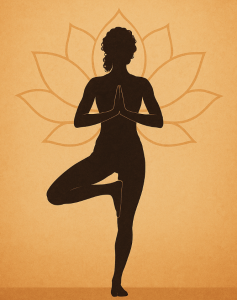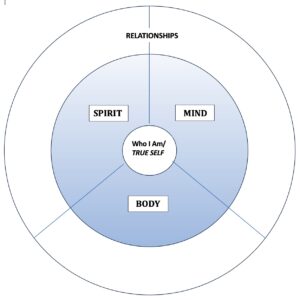Actions in life can be reduced to two factors: positioning and timing. If we are not in the right place at the right time, we cannot take advantage of what life has to offer us. […] Position is useless without awareness. If we have both, we make no mistakes. Deng Ming-Dao
What a powerful statement — “Position is useless without awareness.” It holds true whether our ‘positions’ are physical shapes as in yoga asana (poses) or mental opinions as in Ming-Dao’s statement.
When we operate without an awareness or consciousness of why we are thinking, speaking and behaving in the ways we do, this is defined as impulse. And, impulse often results in mistakes. Why? Because impulse is not intuition. Although both exist without conscious reasoning, impulse is a learned habitual reaction, which is likely fear-based as opposed to truthful. Intuition, on the other hand, is our ability to access or channel wisdom (truth) from our direct experience of life. Awareness is the means by which we do this.
Use your awareness in today’s sequence for easing into Sarvangasana. With awareness, first find the shape or position of each pose. Then, while in each pose, use your awareness to practice the Yoga Actions described below. For the first few minutes begin in a seated position, Virasana or Sukhasana, to bring yourself into your inner experience and to practice the yoga actions.
YOGA ACTIONS:
With your awareness and breath,
1. create DEPTH (front to back) between the breast bone and the thoracic spine;
2. create BREADTH by broadening the upper edges of the shoulder blades away from the spine and by broadening the collar bones away from the sternal notch.
To ease yourself into Sarvangasana, which engages all areas of the body, first stretch your legs. Then open your hips, chest, rib cage, neck and throat. Finally, finish with Viparita Karani, which gives us the physical and mental experience we seek but may not yet be able to find in Sarvangasana. In the Iyengar lineage, it is taught that all yoga poses lead to the mother and father of asana — Sarvangasana and Sirsasana, respectively.
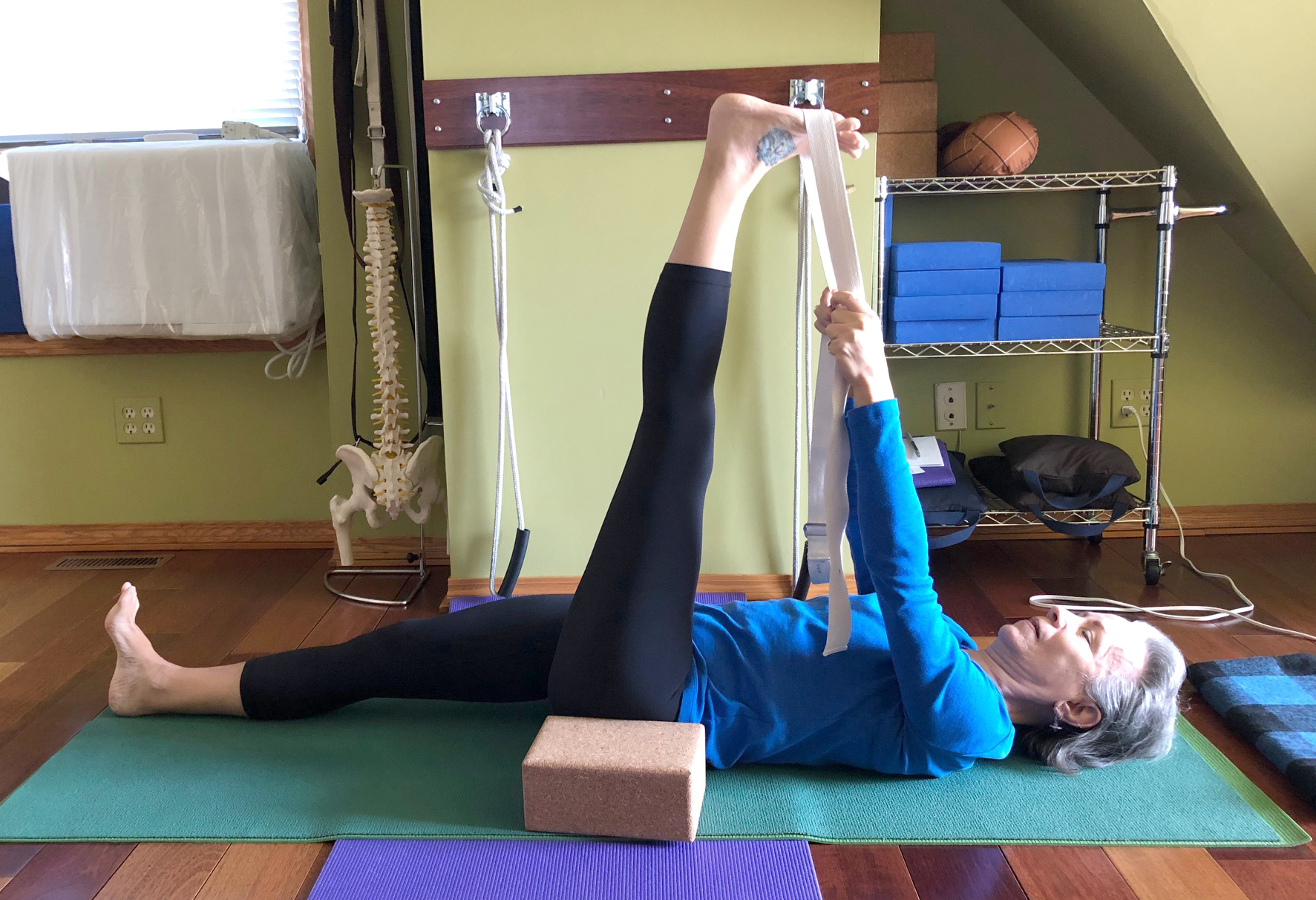
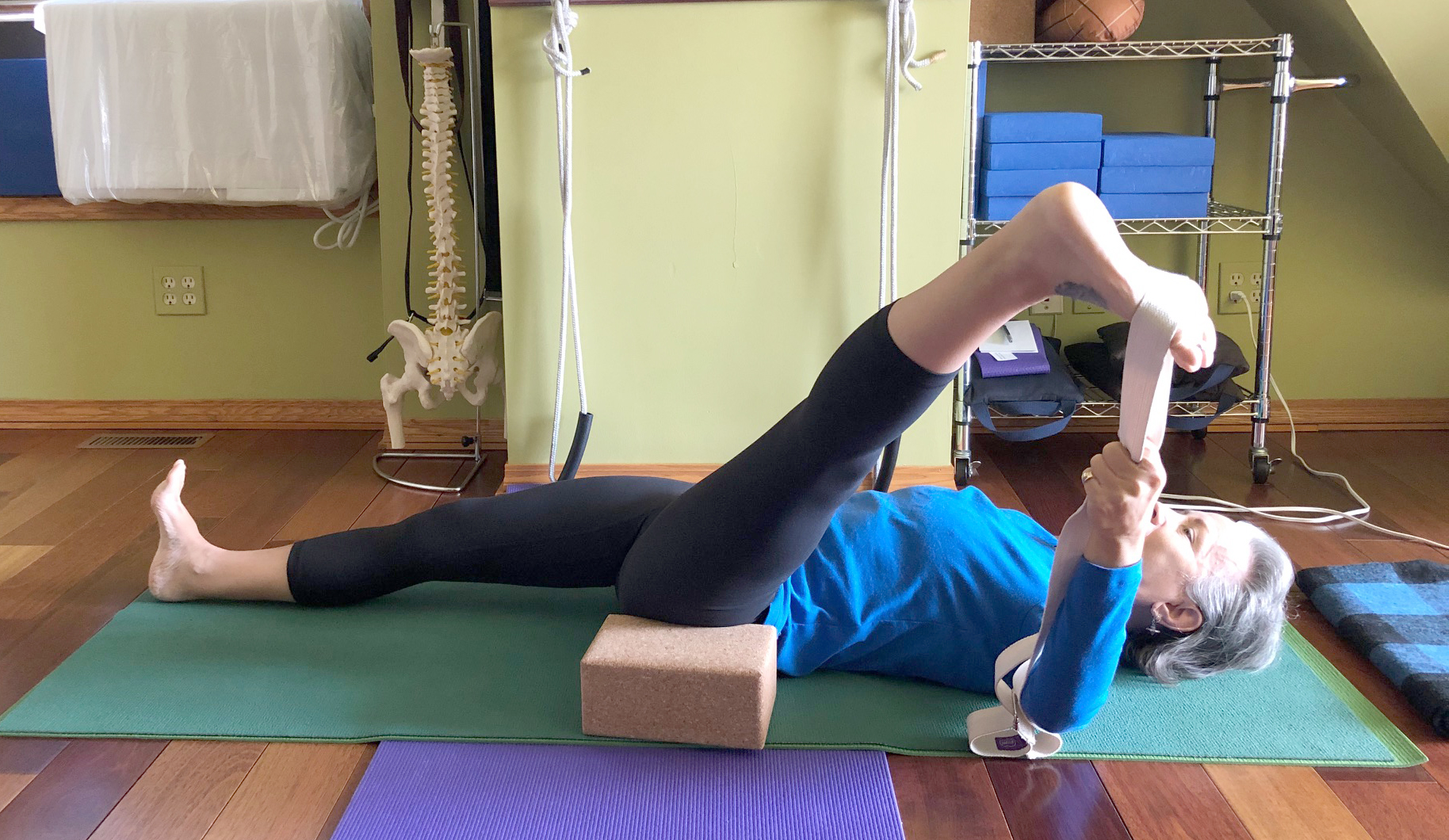
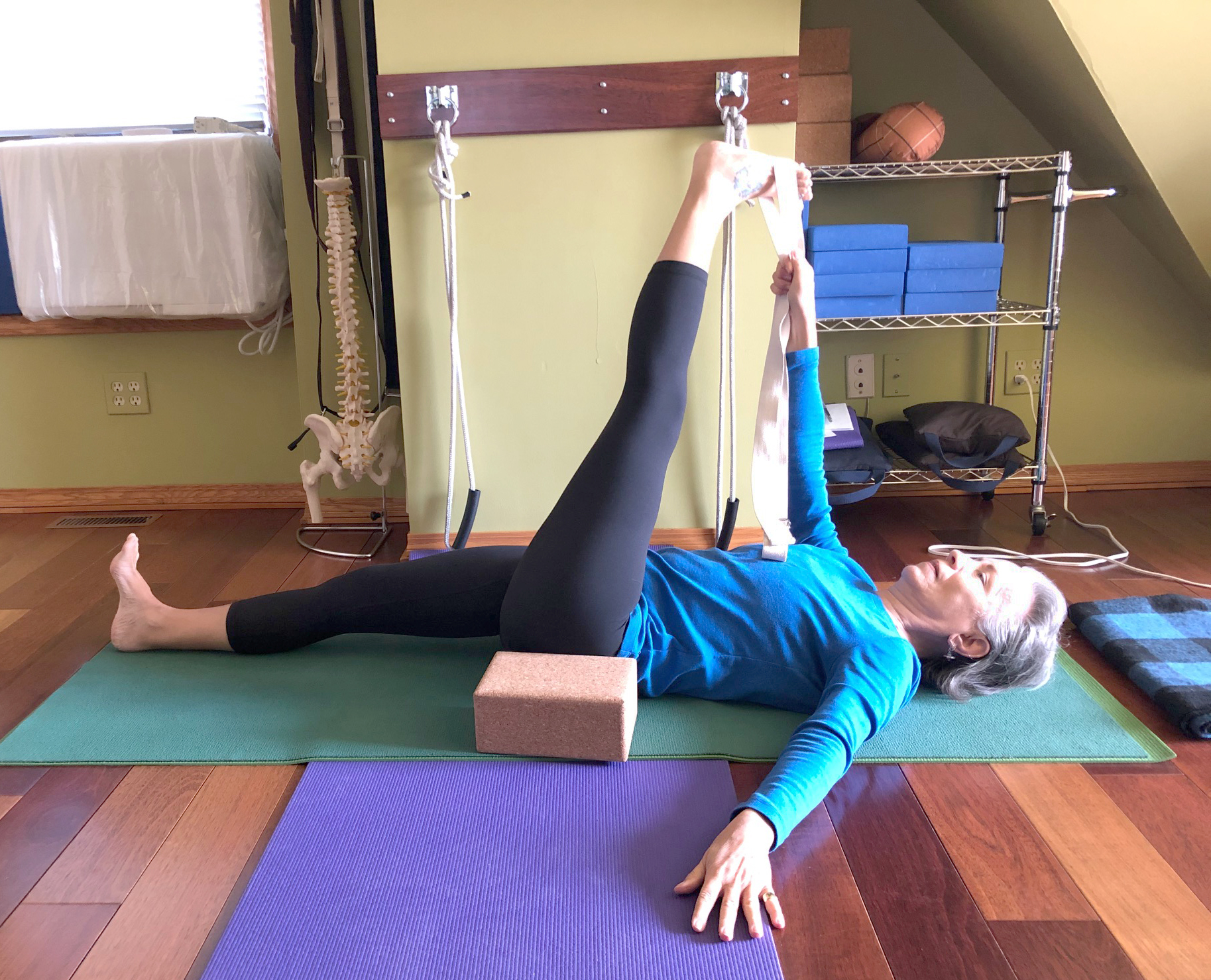
SUPTA PADANGUSTHASANA I, II, III 20 Breaths each
(Reclined Hand-to-Big-Toe Pose)
– stretches the legs
– place a wooden block touching the outer hip of the raised leg
– keep contact of wooden block into outer trochantor
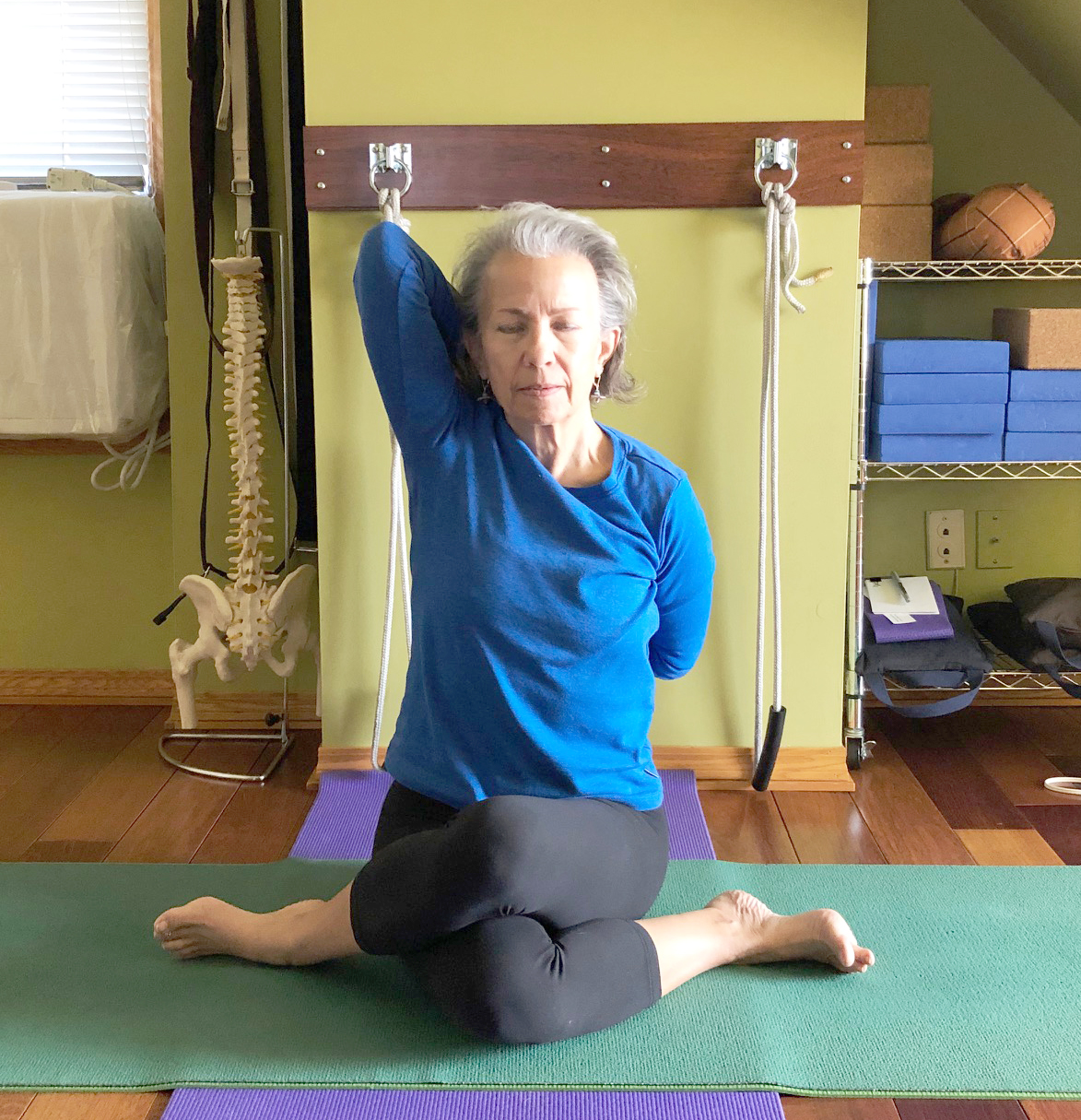
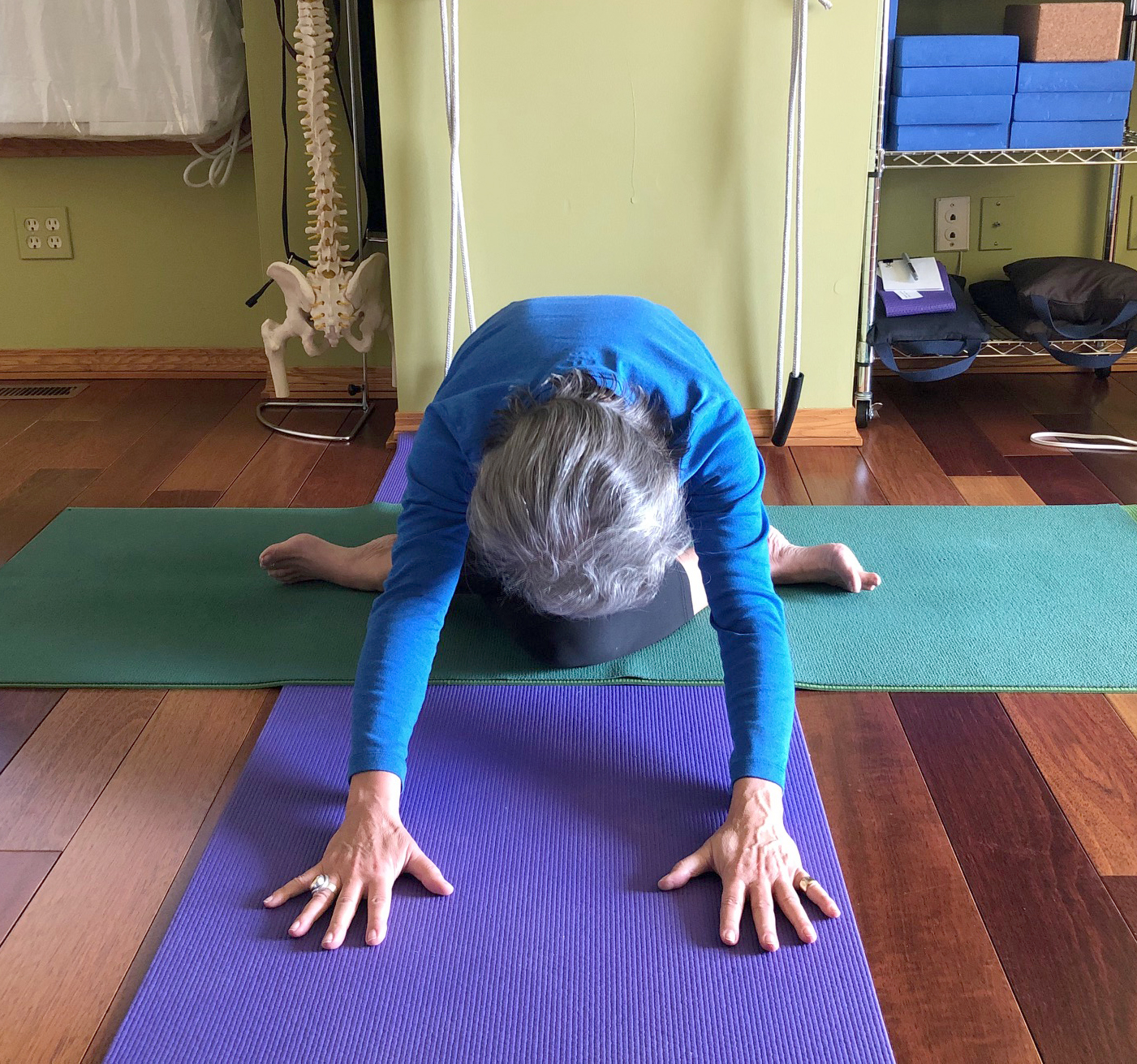
GOMUKHASANA (Cow-face Pose) 20 Bs ea
– opens the hips and shoulders
1) Upright
2) Forward Fold
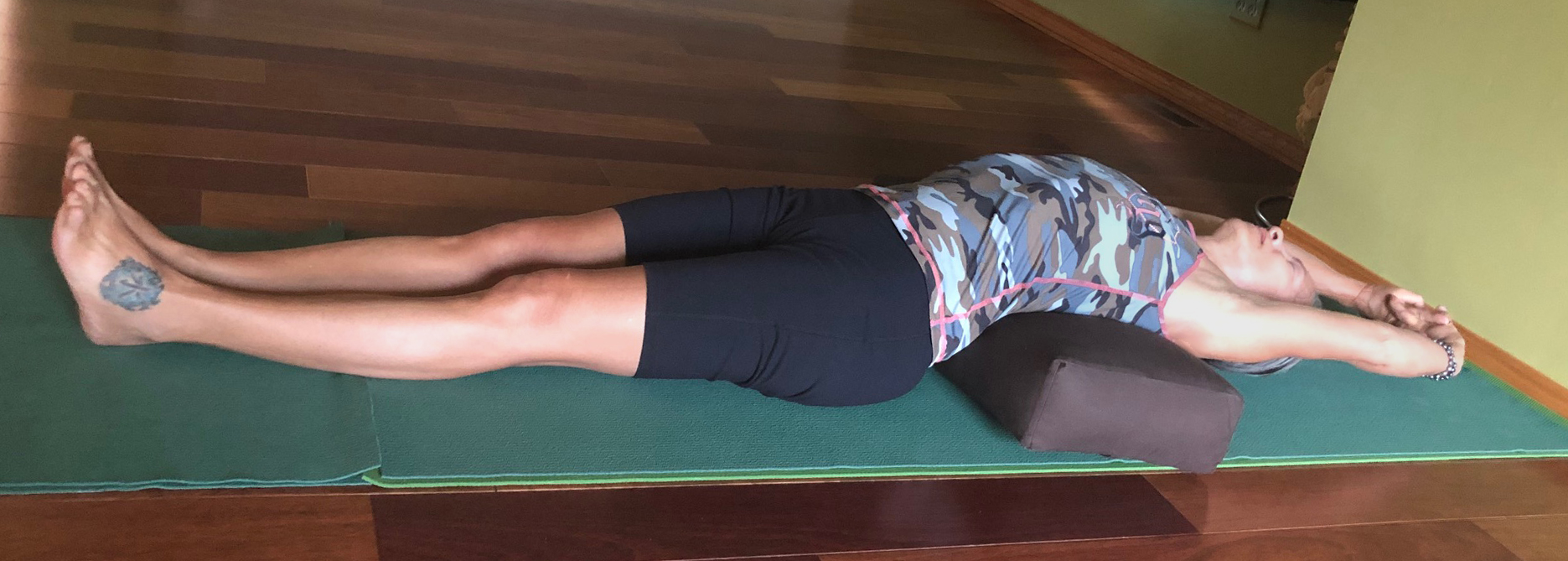
SUPTA HASTA TADASANA (Reclined Mountain Pose) 20 Bs ea
– opens the chest and ribcage
– horizontal bolster under thoracic
– clasp hands overhead into wall; reverse clasp
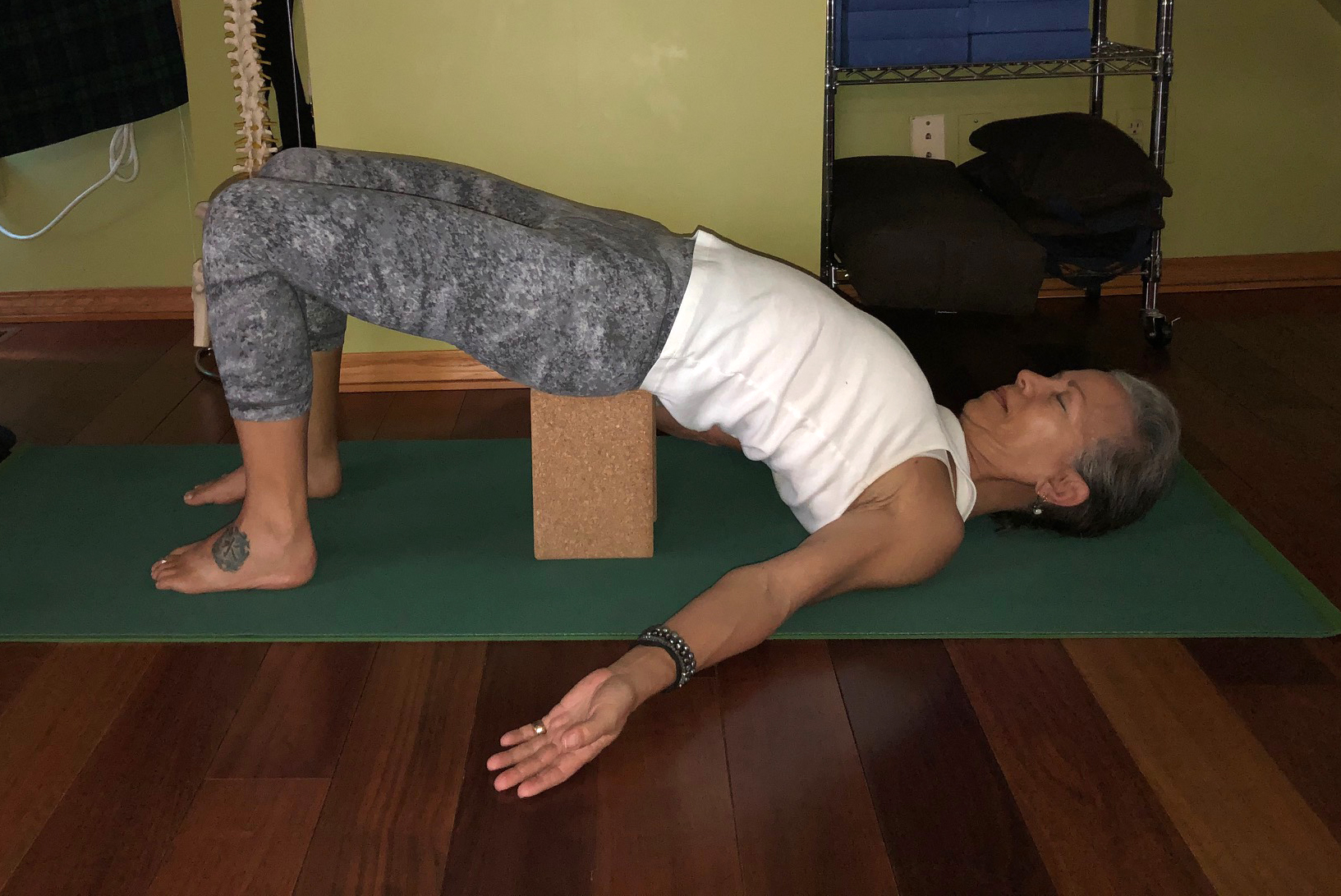
SALAMBA SETU BANDHA SARVANGASANA 10 Bs ea
(Supported Bridge Pose)
– opens the neck and throat while engaging the Jalandhara Bandha
1) feet on bolster, sacrum on high block
– C7 lifts away from floor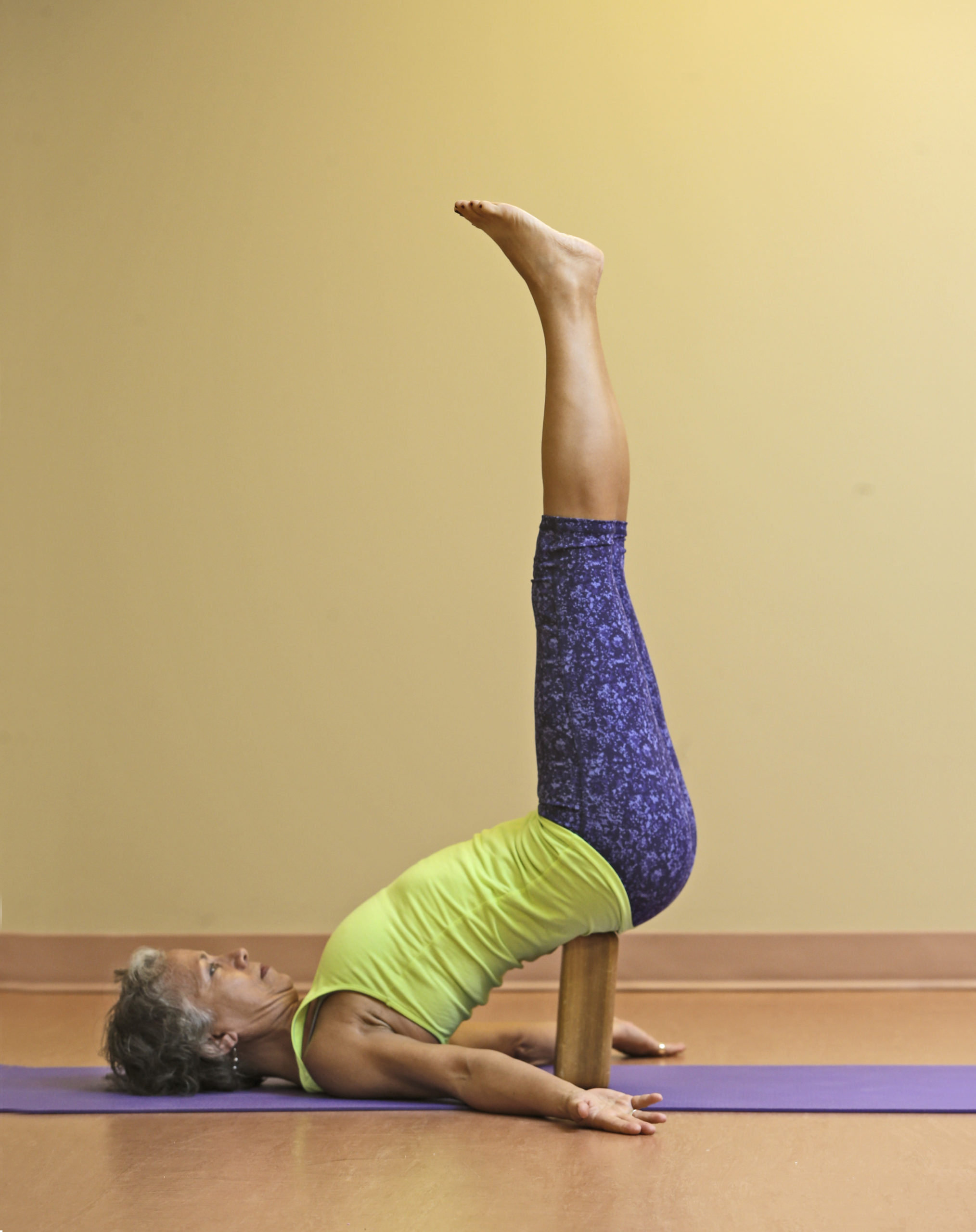
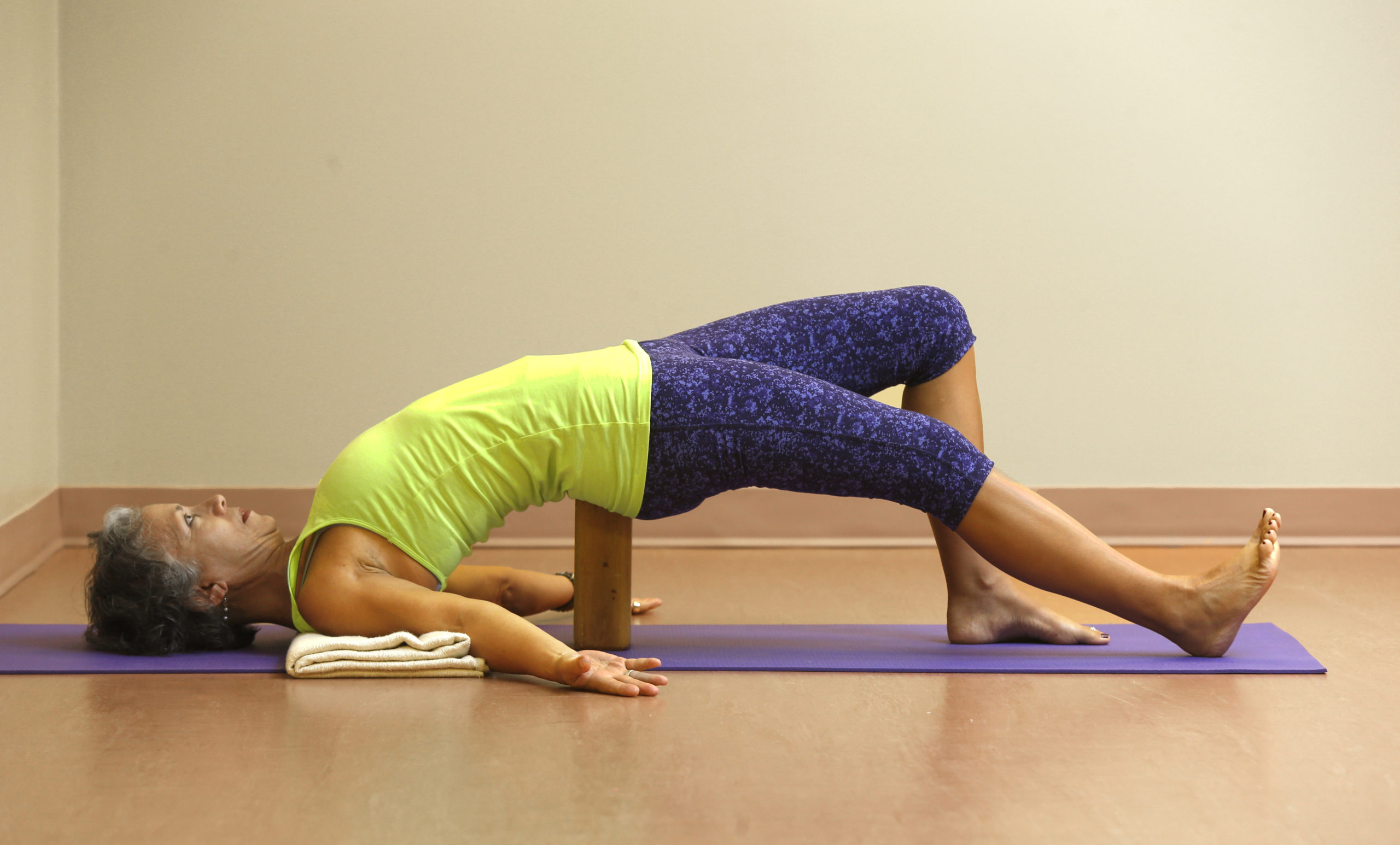
2) Both legs lift to ceiling
3) Lower bent L leg; Right straight leg releases to floor or bolster
4) Repeat on other leg 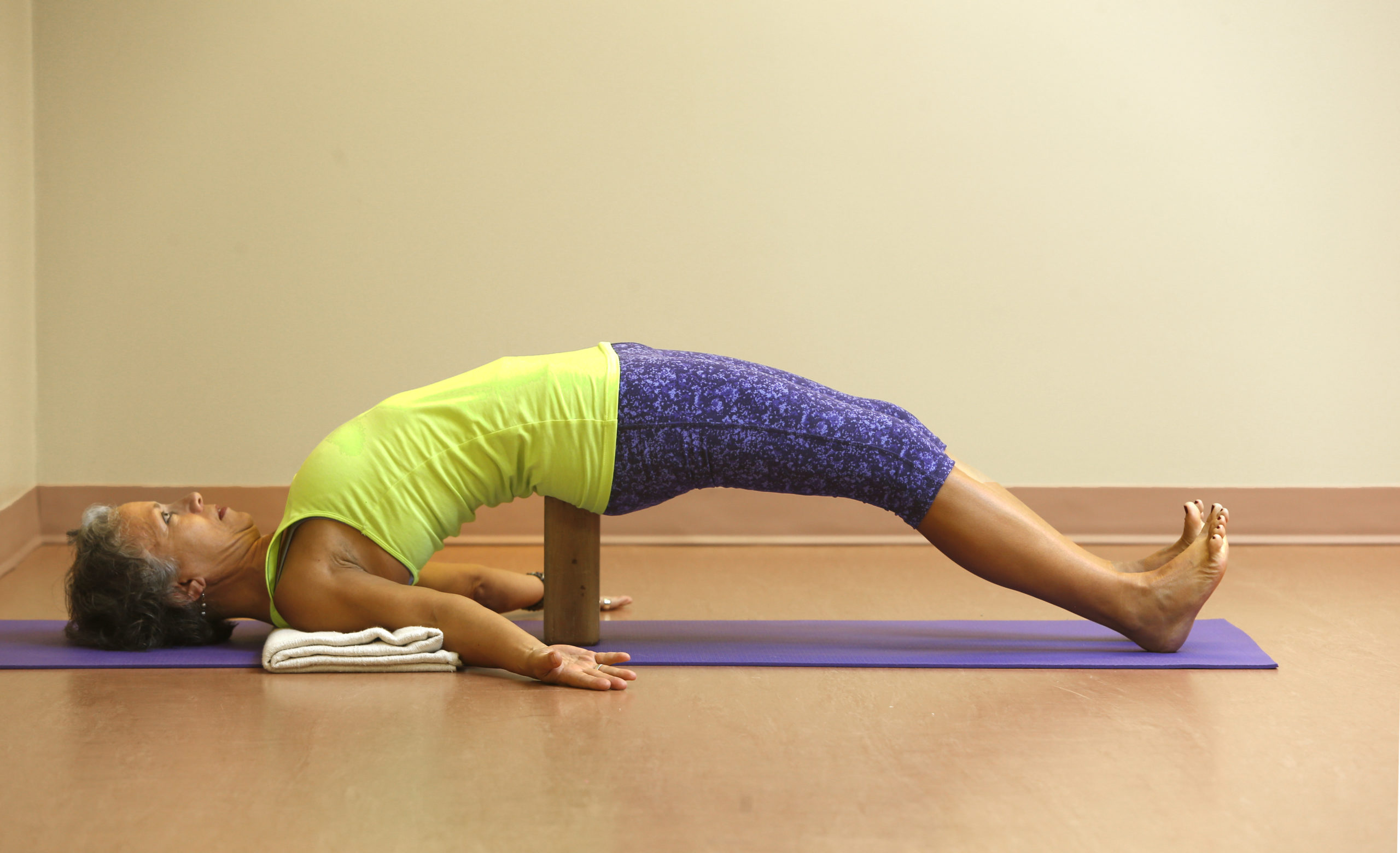
5) Both straight legs release to floor or bolster release straight R leg to floor
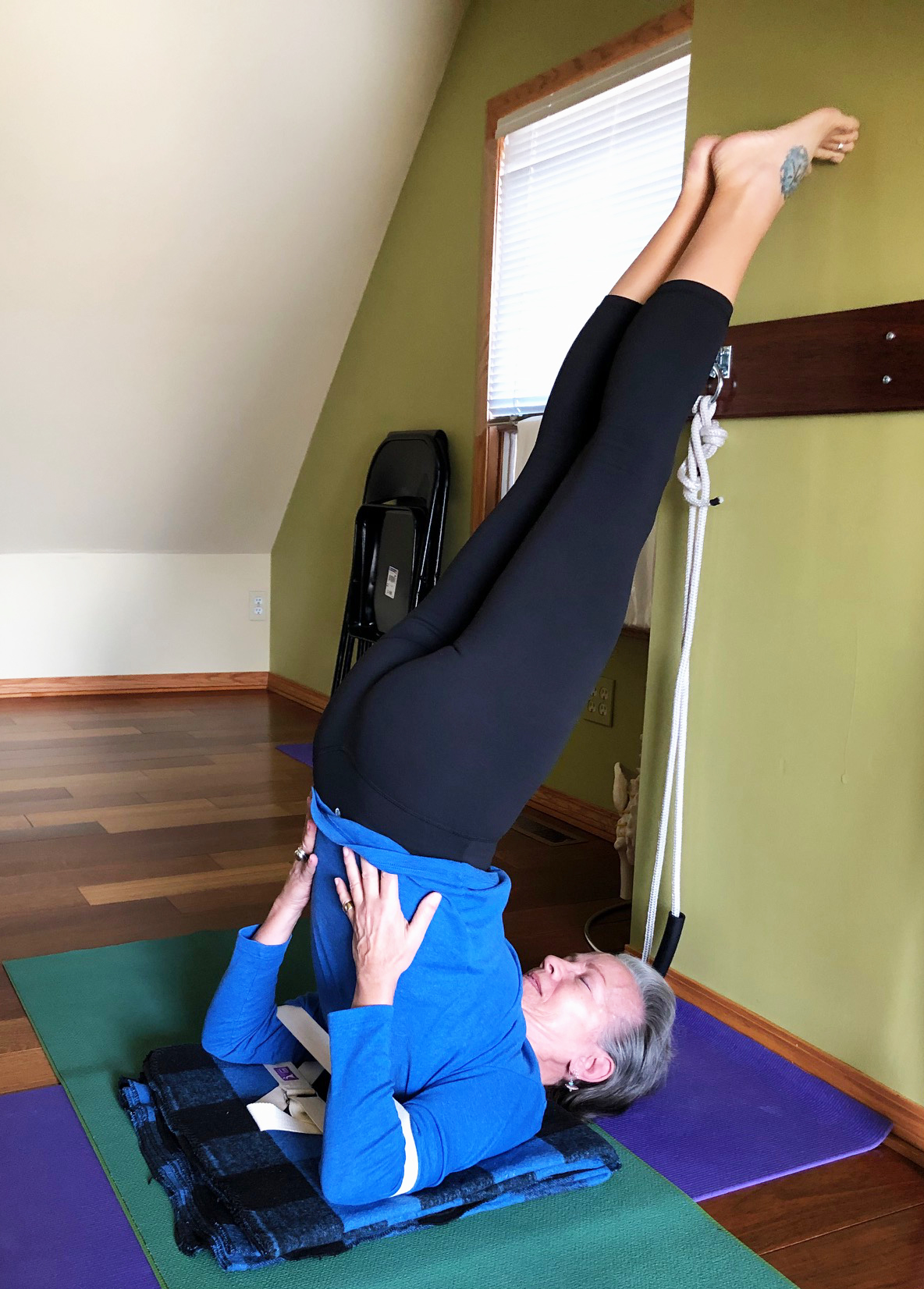
SALAMBA SARVANGASANA (Supported Shoulder Stand) 20 – 30 Bs
– ease in with a supported variation until your intuition indicates you are ready for the full expression
– 2 blankets under shoulders, arms belted, toes rest into wall
– no weight into hands
– straight line from elbows through wrists into fingertips
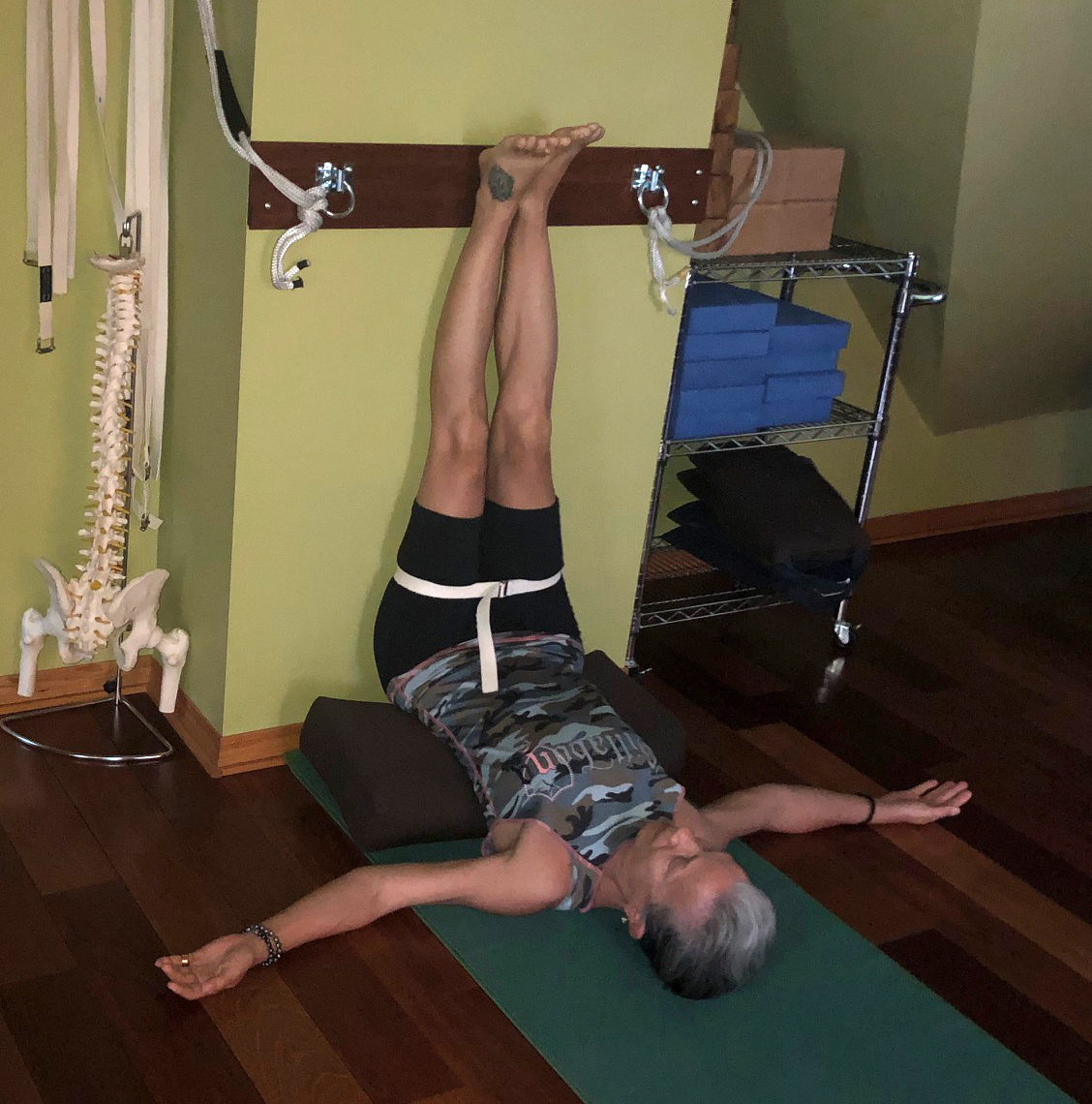
VIPARITA KARANI (Legs Up Wall) 5 – 15 minutes
– belt mid-thighs
– note both the body’s stillness and ease as well as the brain’s calmness and quiet (the Sarvangasana experience)
May your intuition be your guiding light. Namaste.



